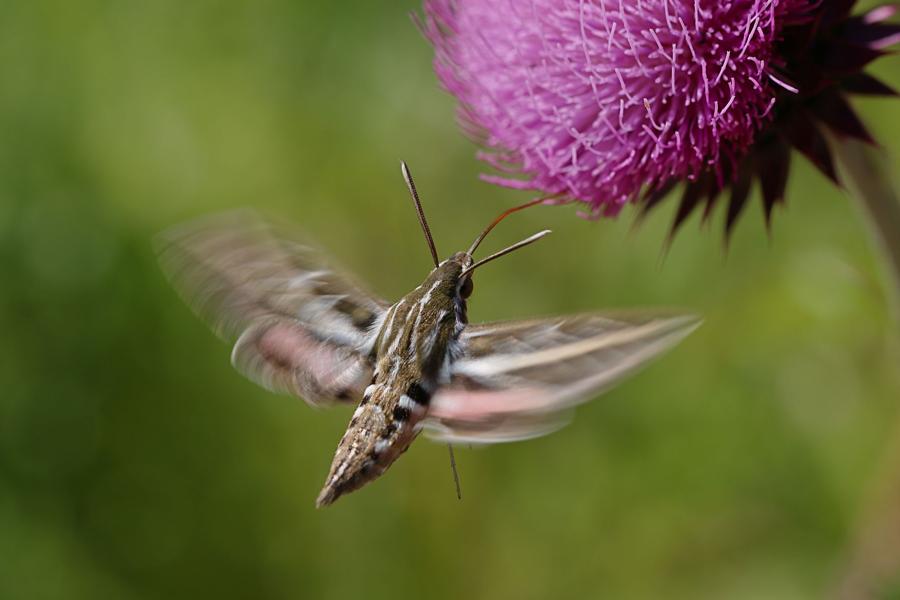Moths Are the Pollinators of the Night

by Melanie Bautista, age16
An accidental discovery by researchers at the University of Denmark found that moths pollinate a third of red clover flowers.
The head of the project, Jamie Alison researches insects that pollinate plants. Alison and his team of researchers were trying to study more about bees and how the red clover got pollinated. Instead, they found that moths play a huge part in the pollination process.
The research group set up 15 time-lapse cameras in the Swiss Alps, where red clovers are found. This made it easier for researchers to keep track of pollinators' visits. From June to August 2021 the cameras captured 36 red clover flowers. Nine of the cameras took images in the afternoon and again at night. The other six 6 cameras snapped photos every 5 minutes.
They set up cameras to take 164,000 photos over time. Out of all of the photos 44 showed insects. 60% of these were bumblebees but the rest were moths. Not just any type of moth but a very specific moth called the large yellow underwings. They also discovered that clovers that were pollinated by moths at night produced more seeds.
Researchers have long overlooked the moths as another major pollinator. Daichi Funamoto, who was not part of the research team but studies pollination at the University of Tokyo, believes the role of nocturnal moths as pollinators has been largely neglected. Future research may show many plants believed to be pollinated by daytime insects are also visited by moths at night, he said. He found the experiment to be significant and believed it will lead to more studies.
Alison says technology played a huge role in the experiment. In the next experiment, cameras might be replaced with artificial intelligence such as robots that can not only take photos but also analyze the whole experiment. “The future isn’t just cameras but cameras should be a big part of it.”
[Source: Science News]



Loading Comments...